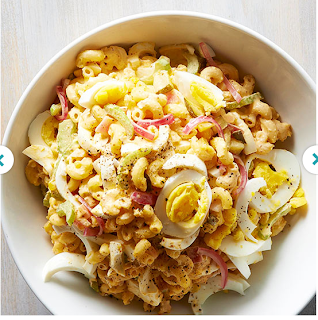Get happy, get Geico!
Geico, founded in 1936, is an auto insurance company that consistently puts out ads starring random, off the wall characters to grab viewers attention. In their most recent television ad, a talking camel trumps through a cubicle office floor asking mundane officer workers what day it is, finally getting one to mumble that it's "hump day"! Geico uses the camel to relay to customers that that they'll be happier than a camel on hump day if they switch to Geico! The characters are portrayed as generic unhappy business people working away on a Wednesday. The camel signifies how happy they could be if they switched to Geico car insurance! The only music that is played is at the end, which is the theme music they play for each of their commercials. The ad is short and to the point, lasting only thirty seconds. It isn't clear what the commercial is for until the last 5 seconds when they cue in Geico representatives letting consumers know how much they can save on auto insurance by switching to Geico.
Past Geico ads have been largely popular. Originally, they used a gecko with a british-like accent in different scenarios. Next were cavemen, "so easy a caveman can do it". The Geico cavemen were so popular they had a spin-off cable television show that only lasted a couple of seasons. My favorite was the Geico piggy with the pinwheel in the back of an SUV, exclaiming Weee Weee Weee! Their commercials are catchy and seem to put a smile on everyone's face which makes their ads work. When I think of car insurance Geico is one of the first on my mind, largely because of their commercial acts.
Geico uses a couple different persuasive techniques in their ads. In their Gecko ads they portray him as a "famous person" having a lot of knowledge and Geico makes sense to him, so it should to you too. The Caveman ads use the plain folks pitch. In their catch line, they say "so easy a caveman can do it". This appeals to people that are lacking time and effort and want insurance quick and easily. In the camel "hump day" ad it's difficult to see which persuasive technique they are using since there are so few words. I feel that the bandwagon effect could apply with their catch lines at the end, that if you switch to their car insurance you will be extremely happy. All of Geico ads use the association principle. They are associating Geico insurance with a positive image, such as an animal like the gecko or the piglet although neither animal has anything to do with auto insurance. Our "Media Essentials" textbook actually uses the Geico caveman ad (unbeknownst to me, until I researched the definitions of each principle) to describe the myth principle. Cavemen buying car insurance is mythical but it is humorous and tells a good story which catches people's attention.
Geico's ads may not make any sense when it comes to low rate auto insurance but again, tell a good story and are memorable. If you can get a character to stick in a consumer's mind, when they think of a product or service, the character will immediately float to the top!
The hump day camel ad is absolutely different, other than Geico's previous commercials using other animal and odd characters, you don't normally see a talking camel walking through an office floor. It's catchy and grabs your attention. Geico is recycling their ads in a way, each has the same feel, but it is working for them. Geico ads are popular and highly discussed and shared. The humor in each ad could make a child laugh but they aren't geared towards children, but of adult age consumers shopping for auto insurance. Geico makes their ads humorous enough for a enormous range of people, even an elderly driver could smile at a piglet in the back seat of an SUV excited about his pinwheel.
The ads can be seen as stereotypical. The camel ad stereotypes the cubicle office worker, zoned into their work with no enthusiasm. This is typical of the way most business officer workers are portrayed in other mediums. In the cavemen ads, they use the stereotypical idea that caveman were dumb, and without a brain, which works in their line, "so easy, a caveman can do it". Geico uses these stereotypes in a non-offensive way. It is easy to find humor in each stereotype.
The "Hump Day" ad is weak in the fact that someone skimming through the channels would have no idea what Geico was selling with a camel trumping through an office space, but! the strength is that someone may actually stop to enjoy the rest of the commercial to get to what they are selling. It's that catchy and memorable. The youtube video of the commercial has almost 11 million views, and that is just the camel ad! That is beyond popular. Even on Facebook, I have seen the ad shared multiple times from viewers that want their peers to get a good laugh too. Business Insider wrote about the popularity of the commercial, specifically on Wednesdays - http://www.businessinsider.com/people-share-geicos-camel-ad-on-wednesday-2013-7
As I said before, I believe that when most of the auto insurance buyers think about switching or buying auto insurance Geico is a top contender because of their ads. I recently searched for new car insurance and Geico was the first in my search list. Their insurance rates seem to be comparable to all of the other top insurance providers.
I was surprised when I was asked about the stereotypes that might be located in the commercial. I think about other commercials I have seen and even TV shows how prevalent stereotypes are. A favorite show of mine, Modern Family is riddled with stereotypes, even the Simpsons. I think by using stereotypes it gives the viewer something to connect with.

